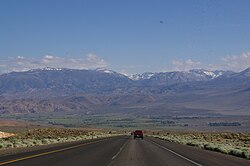| State Scenic Highway System | |
|---|---|
  State Scenic Highway System signage | |
| System links | |
The State Scenic Highway System in the U.S. state of California is a list of highways, mainly state highways, that have been designated by the California Department of Transportation (Caltrans) as scenic highways. They are marked by the state flower, a California poppy, inside either a rectangle for state-maintained highways or a pentagon for county highways. [1] [2]
Contents
- California Historic Parkways
- List of eligible and designated scenic state highways
- Designated county highways
- See also
- References
- External links
The California State Legislature makes state highways eligible for designation as a scenic highway, listing them in the Article 2.5 of Chapter 2 of Division 1 of the California Streets and Highways Code. [3] For a highway to then be declared scenic by Caltrans, the local government with jurisdiction over abutting land must adopt a "scenic corridor protection program" that limits development, outdoor advertising, and earthmoving, and Caltrans must agree that it meets the criteria. The desire to create such a designation has at times been in conflict with the property rights of abutters, for example on State Route 174. [4] [5]
Any county highway that is believed to have outstanding scenic qualities is considered eligible, and the county with jurisdiction must follow Caltrans' same approval process as state highways to be declared scenic. [1]

























